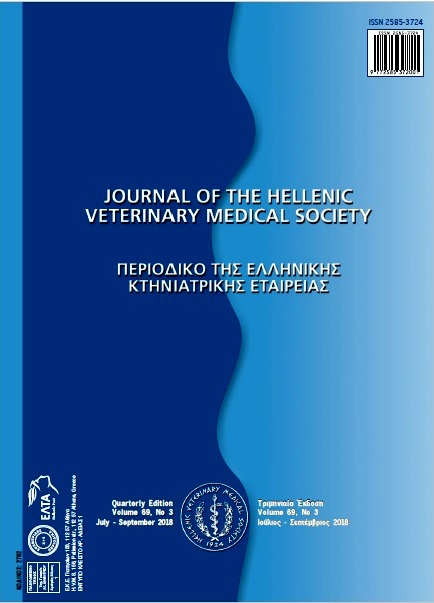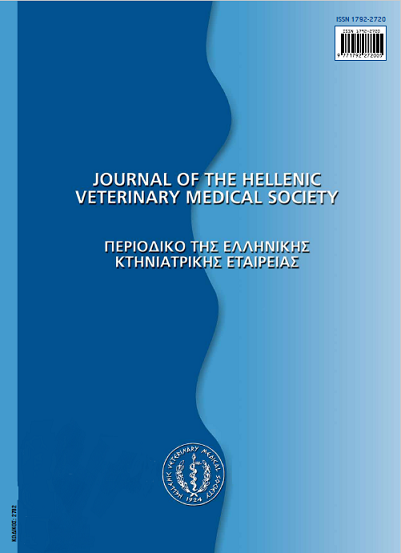First report of granulosa cell tumour associated with an endometrial adenoma in a crossbreed cow in Portugal

Abstract
A 12.5 year-old female crossbred cow without clinical signs at ante mortem inspection was slaughtered. The post-mortem inspection revealed poor carcass condition, interstitial nephritis and generalized lymphadenitis. The reproductive tract presented an unilateral and highly vascularized yellowish-white mass, with huge dimensions (60 x 40 cm and 20 Kg, approximately) described as granulosa cell tumour (GCT) and a endometrial adenoma, after histopathological analysis. GCT has been described as the most frequent ovarian tumour in cattle. Since clinical signs are usually unspecific, the post mortem diagnosis by histopathology examination is always necessary. The endometrial adenoma could be asymptomatic, with only absence of calving, or associated with GCT. This is, of our knowledge, the first report of a GCT associated with endometrial adenoma in a cow in Portugal.
Article Details
- How to Cite
-
MOURA, D., GARCÍA-DÍEZ, J., SARAIVA, C., & PIRES, M. A. (2018). First report of granulosa cell tumour associated with an endometrial adenoma in a crossbreed cow in Portugal. Journal of the Hellenic Veterinary Medical Society, 69(3), 1155–1160. https://doi.org/10.12681/jhvms.18889
- Issue
- Vol. 69 No. 3 (2018)
- Section
- Case Report

This work is licensed under a Creative Commons Attribution-NonCommercial 4.0 International License.
Authors who publish with this journal agree to the following terms:
· Authors retain copyright and grant the journal right of first publication with the work simultaneously licensed under a Creative Commons Attribution Non-Commercial License that allows others to share the work with an acknowledgement of the work's authorship and initial publication in this journal.
· Authors are able to enter into separate, additional contractual arrangements for the non-exclusive distribution of the journal's published version of the work (e.g. post it to an institutional repository or publish it in a book), with an acknowledgement of its initial publication in this journal.
· Authors are permitted and encouraged to post their work online (preferably in institutional repositories or on their website) prior to and during the submission process, as it can lead to productive exchanges, as well as earlier and greater citation of published work.



